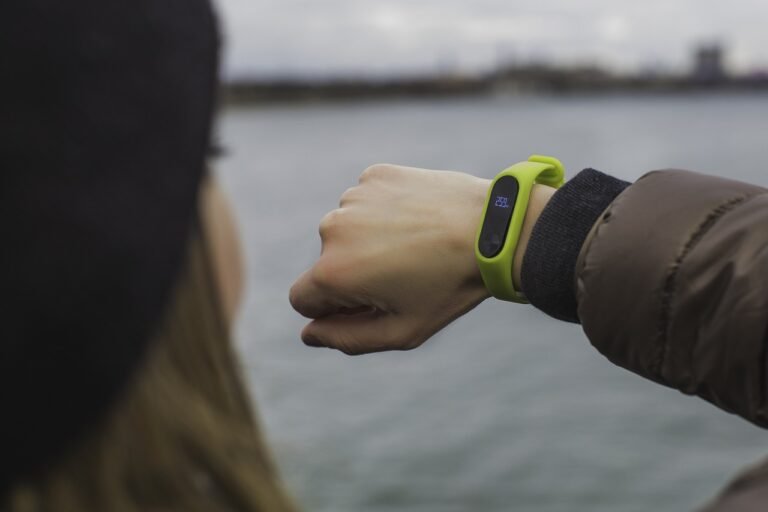Fitness Trackers and Wearables

By Doaa Samir

Fitness trackers have become more sensor-packed and efficient, but these neat wearable devices have also become more affordable. The bracelet-style wearable technology either comes as a smartwatch or your traditional and more commonly known fitness tracker. Surprisingly, fitness trackers have been around for longer than one would think.
Where Did Fitness Trackers Come From?
The first, although primitive, pedometer is credited to horologist and inventor Abraham-Louis Perrelet. Although, it has been proposed that American Founding Father Thomas Jefferson later developed his own mechanical pedometer, improving on Perrelet’s original concept.
The Manpo-kei, which translates to “10,000 steps meter”, was invented by Dr Yoshiro Hatano in 1965. The design has evolved into the first fitness tracker as we know it today. Dr. Hatano said that 10,000 steps offered the right amount of caloric intake and activity-based calorie expenditure to keep a body balanced and in check. Despite the fact that modern fitness trackers still use 10,000 steps as a benchmark goal, a new report published in the International Journal of Obesity indicates that 15,000 steps could be a more beneficial goal to aim for.
Fitness tracking systems and the technology that underpins them have advanced at a breakneck pace since the 1960s. The advent of wireless heart rate monitors in Polar watches in the 1980s, and later 3D accelerometers (monitoring of acceleration and vibration in three dimensions) has greatly added to the improvement of the hardware and software found in fitness trackers.

Advantages of Fitness Trackers
Accountability: Whether you’re walking, jogging, or working out, a fitness tracker will help you stay on track. You’re more determined to get your steps in or finish your workouts.
Motivation: A fitness tracker provides a visual representation of your daily progress and achievements. Seeing how far you’ve come each day is a great motivator to keep going.
Healthy eating: Maintaining a healthy diet while exercising is important. Maintaining a balanced lifestyle requires keeping track of your food, caloric intake and loss, and water consumption.
Set daily goals: Make a list of things you want to do each day. 10,000 steps a day, for example. It’s a wonderful feeling to know that you can accomplish everything you put your mind to.
Tracks sleep: A fitness tracker can monitor your sleep habits, including how deep or light you slept, how long you slept, and how often you wake up. Understanding your sleep habits will help you get a good night’s sleep and feel better the next day.
Stay Connected: Some fitness trackers have Wi-Fi and Bluetooth capabilities. You can now accept incoming calls, text messages, and emails without having to look at your phone. It’s a perfect way to stay connected without having to be by your phone all of the time.
Monitors Heart Rate: By Most fitness trackers can monitor your pulse and your heart rate. With each exercise, you’ll be able to hit your target heart rate. Your target heart rate should be about 50-70 percent of your maximum heart rate during mild physical activity, and 70-85 percent of your maximum heart rate during intensive workouts. Changes in the heart rate can be detected by today’s fitness trackers.
Disadvantages of Fitness Trackers
Costly: Fitness trackers can be costly to purchase. This especially true for brands that offer connectability.
Battery: Some of today’s trackers have so much to offer that they can use more power. This could have an impact on battery life. Battery life should be considered carefully when purchasing.
Accuracy: Some trackers are not 100% accurate. Some of the measurements or details shown on the screen may not accurately reflect the true data or results.
What Will the Future Hold For Fitness Trackers and Wearables
While the future of wearables and their effects on our lives is still uncertain, several businesses have started to stake their claims. Anticipating what the next big thing will be, one direction being investigated is shifting the fitness tracker from the wrist to the finger – in the form of “smart jewelry”.
Right now it’s clear that the fitness tracker and broader wearables markets aren’t going anywhere anytime soon. Many fitness professionals, according to our study, are very supportive of their clients use of wearables and even actively promote it.
The fitness industry continues to expand at a breakneck pace, both in terms of people who use gyms on a daily basis and those who hire personal trainers or take group classes. As a result, it’s unlikely that wearables will ever “replace” conventional fitness instructors, but there is still plenty of room for the two parties to collaborate and complement one another.
Fitness Trackers In Our Lives
Fitness trackers have become increasingly common as a means of keeping track of your progress. Wearers will monitor steps, calories, distance traveled, caloric intake, and even heart rate and sleep, depending on the tracker. Some also have GPS monitoring to keep track of your distance and speed. Although fitness trackers may seem to be a waste of money for those who already have an athletic motivation, they can be the “ghost you” you have been looking for all along!
Unless the software that comes with your fitness tracker allows you to use social media, you’re just competing against yourself! Fitness trackers keep track of your goals and progress. They mentally motivating you to take more action today than yesterday, run faster today than yesterday, and maintain the peak heart rate for just a little longer for that intense interval training session. Wearing a fitness tracker – even if it’s only a simple pedometer can increase a user’s activity levels by 30%, according to research.
Maybe you are a seasoned 5k runner who wants to branch out to the 10k and half-marathon distances. Maybe you haven’t even gone for a walk around the neighborhood since you graduated from college. In any case, most fitness trackers provide exercises, tips, and attainable goals that you can set for yourself. Before completing a half-marathon, you will have to tackle the 5k and the 10k. There are Couch-To-5k programs that come pre-loaded on some fitness trackers that can train you to run 3.1 miles in as little as 8 weeks.

